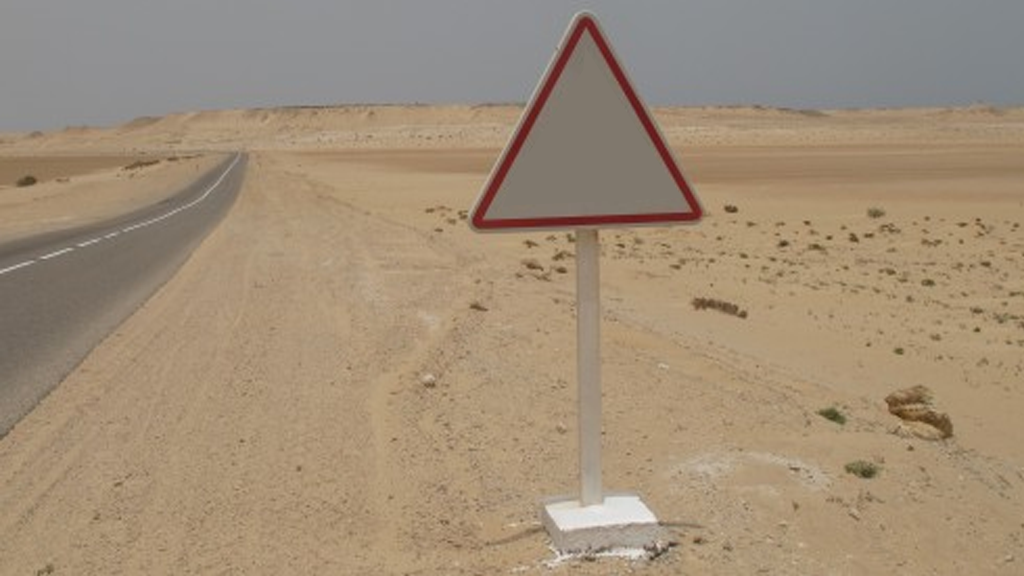I-STRATEGIC LOCATION OF PERMIT
Barite research permits are located to the extreme north of Mauritania in the Bir Moghrein area, at the interface of the Birrimiennes rocks of the Réguibat shield and the Sedimentary Rocks (Ordovician) of the Tindouf Basin. The two permit area are 500 km ² each.

Fig.1-Permit location map in north-eastern geological units of Mauritania
II-BARITE INDEX IN BIR MOGHEEIN REGION
Suricate Sarl, holds two permits (2367B 2 and 2391 B 2) for barite research in the Bir Moghrein area. According investigations, particulary those of the PRISM, who reported the existence of six distinct epithermal veins barite-fluorine, spatially associated with the sienite intrusion of Bir Moghrein. Two are adjacent to the intrusion, and four others are approximately 2, 5, 6 and 11 km to the southeast or northeast of the intrusion. The ensemble has been described as quartz-barite-fluorine-sulfide veins from 40 m thick and extending up to 200 m in length, distributed discontinuously over 2 to 3 km. These veins bend the Precambrian bedrock of the shield and sedimentary rocks of the Ordovician according to N-S and NNE-SSO directions (March and Anderson) and are interpreted as linked to the Mauritanian orogeny.
III-PROSPECTING WORK
III.1- PERFORMED WORKS
The first reconnaissance mission carried out on the ground, confirms the presence of the index and a large potential deposit. It counts over 25 veins of barite veins, to variable mineralogical composition; either baryte, baryte associated with pyrite, pegmatite, quartz or feldspaths.
Barite is spread on a distance more than 72 km along major regional faults.

Fif.2-Outcrop of barite veins in the geological map of permits 2367B2 and 2391B2.
Green: view to the first reconnaissance mission, in red: indices highlighted by PRISM
Analysis of collected surface rocks (outcrops) shows BaSO4 contents of the order 78.9%. Indeed, this barite on surface enriched in silica (the last juice of crystallization), CaO (0.11%) because contaminated and altered, can be compared on quality to the Bou Ouzzal deposit in Morocco (third largest exporter in the world, 1,000,000 t / year), whose Ba are between 50.81% and 57.68% compared to 51.8% of rock outcrops
| Parameter | * | LIMS-ID | 15-1671 |
| NORM | Suricate Sarl BB | ||
| SiO2 | 1 | DIN EN ISO 12677 | 19,4ôMA-% |
| Al2O3 | 1 | DIN EN ISO 12677 | 0,24ôMA-% |
| FeO3 | 1 | DIN EN ISO 12677 | 0,09ôMA-% |
| TIO2 | 1 | DIN EN ISO 12677 | 0,08ôMA-% |
| K2O | 1 | DIN EN ISO 12677 | 0,03ôMA-% |
| Na2O | 1 | DIN EN ISO 12677 | 0,51ôMA-% |
| CaO | 1 | DIN EN ISO 12677 | 0,11ôMA-% |
| MgO | 1 | DIN EN ISO 12677 | <0,01ôMA-% |
| PbO | 1 | DIN EN ISO 12677 | <0,01ôMA-% |
| BaO | 1 | DIN EN ISO 12677 | 51,8ôMA-% |
| SO3 | 1 | DIN EN ISO 12677 | 27,1ôMA-% |
| MnO | 1 | DIN EN ISO 12677 | <0,01ôMA-% |
| P2O5 | 1 | DIN EN ISO 12677 | 0,01ôMA-% |
| ZrO2 | 1 | DIN EN ISO 12677 | <0,01ôMA-% |
Table .1 Chemical analysis of Bir Moghrein barite (Rock collected on soil surface).
Anzaplan / Germany
This barite intersects the geological formations in place by filling the regional faults that affects this region. These faults are large, post or late-neobirrimian stalls and are the most spectacular structural trait of the Reguibat shield. These deformations are wide from a few meters to several hundred meters and belong to two large families of deformation oriented NNW-SSE and E-W (to ESE-WNW).
The morphology of the barite outcrops and the presence of sulfides testify to the case of an exhalative hydrothermal deposit, in relation to magmatic activity. Many hydrothermal deposits of barite are found in the paleokarsts, at the interface between the base and the sedimentary cover (Report on Barium BRGM, 2014).
Barite is often associated with sulfides (Pb) or sulfates (Sr). Thus, deposition formation is linked to underwater hydrothermal sources in relation to a more or less discrete volcanic activity (Alboury and Rousseau, 1993). The world's biggest deposits of barite belong to this category of exhalative hydrothermal origin.
Thus the geological context, morphology and depth of outcrops suggest large amounts of barite deposition.

Fig.3-Outcrop of barite vein associated with quartz, more than 100 m of long
III .2-ONGOING WORK
The industrial use of the barite is based on density, chemical stability, white, and abundance. The current mission has set itself the objective of studying the quality and quantity of the deposit by:
- Mapping and evaluating the surface and subsurface deposits ;
- Study lateral extension and deep continuity of the deposit;
- Chemical and physical analysis of different levels of mineralization;
- Clarify the typology of the deposit and the perspectives who comming that.
APPENDICES

